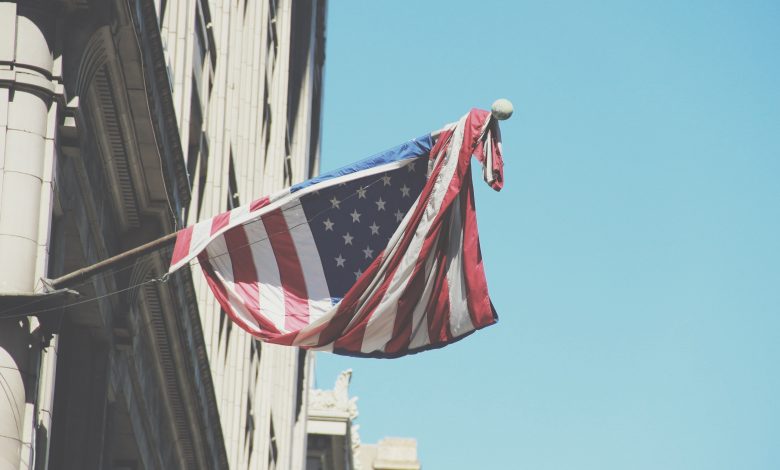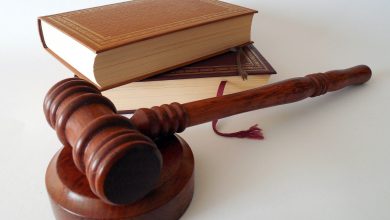What is Treason?: A Complete Overview of Treason in the U.S.

Treason is a rare crime that has a precise definition. Broadly, treason can be defined as criminal disloyalty against the state. But not all offenses against the country are considered treason. Below is a complete overview of treason, including the specific language governing the law, and the history of treason in the U.S.
What is Treason?
Section 110 of Article III in the United States Constitution defines treason, saying that those “owing allegiance to the United States” can be convicted of treason for committing the following:
“Treason against the United States shall consist only in levying war against them, or in adhering to their enemies, giving them aid and comfort. No person shall be convicted of treason unless on the testimony of two witnesses to the same overt act, or on confession in open Court. The Congress shall have power to declare the punishment of treason.”
The reason for the specific way that treason is defined is that lawmakers did not want the law to be misused. If someone is tried for treason, there are four main ways a person can defend themselves against the charge:
- They didn’t commit the crime.
- Someone forced them to do it.
- The crime was committed against the state but fell short of treason.
- They claim insanity.
In 1790, Congress amended the article on treason to include that those found guilty of treason against the United States shall suffer death. Anyone found guilty of knowing of the treason that does not come forward with the information can be sent to prison for up to seven years.
Treason can be committed in two different ways: committing an act of war against the United States or adhering to its enemies, giving them aid and comfort.
In 1807, Samuel Swartwont and Erick Ballman were charged with high treason, and Chief Justice John Marshall clarified what it means to commit treason in his delivery of the court’s opinion.
Justice Marshall stated that “if a body of people conspire and meditate an insurrection against the United States they are only guilty of a misdemeanor. But if they proceed to carry such intention into execution by force, that they are guilty of the treason of levying war.” He went on to clarify “that it is altogether immaterial whether the force used is sufficient to effectuate the object; any force connected with the intention will constitute the crime of levying war.”
Etymology of Treason
The word treason is based on the French word “trahir,” which means “to betray,” and the word “trahison,” which means “betrayal.”
Other terms for treason from around the world include:
- Judas
- Benedict Arnold
- Mir Jafar
- Jash
- Hanjian
- Malinchism
- Quisling
Is Espionage Considered Treason?
Espionage and treason are very closely related but are two different crimes according to U.S. law. The definition of espionage is spying or using spies to obtain confidential information. Espionage is a crime against the state and can be considered treason in certain instances.
Is Conspiracy Considered Treason?
Conspiracy on its own is not considered treason. However, if someone conspires to levy war against the United States and moves to take action, they can be found guilty of treason.

A History of Treason in the U.S.
There have been close to 25 total cases of treason committed in United States history. Many of the early examples of treason in the U.S. ended in annulments or pardons. Below are ten of the more significant cases of treason in U.S. history:
The Whiskey Rebellion
Also known as the Whiskey Insurrection, the Whiskey Rebellion began in 1791 and ended in 1794. In 1791, a new tax was enacted on all distilled spirits, but since whiskey was by far the most popular distilled spirit at this time in the U.S., it became known as the “whiskey tax.”
Farmers at the time opposed the tax, as they were accustomed to taking their surplus rye, corn, and wheat to make fermented spirits. Whiskey became a medium of exchange for these farmers. Many of these men fought during the American Revolution and believed the tax went against the principles of the war. Western Pennsylvania was especially disturbed by this tax, and protesters used intimidation and violence to prevent officials from collecting taxes.
The resistance came to a climax in July of 1794 when a U.S. Marshall served writs to western Pennsylvania distillers that had not paid the tax. This action had a domino effect and spurred over 500 armed protesters to attack the home of tax inspector General John Neville. Peace commissioners were sent by Washington to negotiate with the rebels. At the same time, 13,000 militiamen led by George Washington were gathered from Pennsylvania, Virginia, New Jersey, and Maryland to confront the rebellion.
There was no bloodshed by the time the militia arrived, and 20 men in total were arrested. Two of those men, Philip Vigol and John Mitchell, were convicted of treason and were sentenced to hang. However, both were pardoned by George Washington.
Fries’ Rebellion
Another tax revolt in Pennsylvania that resulted in treason charges was Fries’ Rebellion, which took place between 1799 and 1800. As conflict began to surface between the United States and France in 1798, the U.S. government enacted a new tax called the Direct House Tax to raise money in preparation for war. The tax was assessed based on the value of houses and land in each state, and Pennsylvania was responsible for contributing $237,000.
An auctioneer named John Fries began organizing meetings in February of 1799 to form a resistance against the tax. In a meeting the government held in Milton township to help explain the tax, a revolt broke out, and the meeting turned into a protest. Assessors in the town became unsuccessful in collecting their taxes, and John Fries personally threatened assessors if they were to continue their work in the area. When the assessors ignored the threat, Fries led an armed response that forced the tax assessors to abandon Milford for the time being.
In March of 1799, Fries escalated his rebellion by leading a local militia to nearby Quakertown as they pursued the tax assessors. The militia captured many of the assessors. They were released with a warning not to return and to let the government know what was happening.
During this time, the opposition to the tax spread throughout Pennsylvania. Some tax assessors resigned, while others begged to quit but could not, as there was no one willing to take their place.
Eventually, a U.S. Marshall started arresting people for tax evasion in the towns of Northampton and Millerstown. During one incident, a crowd formed to protect the man from being arrested. The crowd succeeded, and the U.S. Marshall continued to make arrests and brought his collection of prisoners to Bethlehem. However, a group of rebels came to Bethlehem and released the prisoners without incident.
At this time, President John Adams sent federal troops to the rebellious town and began making extensive arrests. John Fries was among those arrested.
A total of 30 men were tried in Federal court, with Fries and two others tried for treason and sentenced to hang. However, John Adams pardoned Fries and the others convicted of treason, using the constitution’s narrow definition of treason as his reasoning. Adams, at the time, said that the German American rebels “were as ignorant of our language as they were of our laws.” In 1800, Adams issued general amnesty for all involved parties.

Aaron Burr
In 1806, former U.S. Vice President Aaron Burr was arrested for treason with the crime being that Burr was plotting with Spain. General James Wilkinson was a Spanish agent, and Burr was accused of conspiring with Wilkinson to provide Spain with a piece of American land. Burr ended up being acquitted in 1807, with the reason being that his crime against the state was not at the level of treason.
The treason charge was not the first time that Burr had committed a crime. In a duel in 1804, acting Vice President Aaron Burr shot and killed his political rival Alexander Hamilton. Burr was never tried for the illegal duel, but this action ended his political career.
The Dorr Rebellion
Thomas Dorr was convicted of treason in 1844 for his resistance against the government of Rhode Island. The Dorr Rebellion was a case of the middle class resisting a small group of rural elites that controlled the government.
At the time, Rhode Island was still using its 1663 colonial charter as its state constitution, which stated that only male landowners owning at least $134 of property were allowed to vote. This qualification served to keep the rural elite in control of the government and meant that the majority of the population which lived in the city and did not own land was under-represented. Many tried to replace the colonial charter with a new state constitution but were unsuccessful because the state did not have a defined way to amend the charter.
In 1841, Thomas Dorr led a group of supporters in drafting a brand new constitution for Rhode Island. They called it the “People’s Convention,” and the new law was known as the People’s Constitution. To combat this, the state’s General Assembly held their own convention and drafted what they called the “Freemen’s Constitution,” making some concessions for voting qualifications.
Later that year, both constitutions were voted on, and the People’s Constitution won by an overwhelming amount thanks to Dorr’s supporters. In early 1842, two separate elections were held electing Samuel Ward King as Governor of Rhode Island, as well as Dorr. King showed no signs of introducing the new constitution, and the situation eventually led King to declare martial law.
In May of 1842, the state of Rhode Island asked for federal troops to come and suppress the opposition. On May 19, Dorr supporters were unsuccessful in an attack on Providence. Among those defending Providence were Dorr’s father Sullivan and his uncle Crawford Allen. After the defeat, Dorr went to New York and returned the following month with more armed supporters with the idea of holding another People’s Convention.
Governor King responded to the assembly by sending the state militia to engage with Dorr’s men. Realizing the militia would defeat him, Dorr disbanded his men and again left the state. A warrant for his arrest was issued along with a reward of $5,000.
In response to an overwhelming amount of support for a new constitution, in September of 1842, the Rhode Island General Assembly drafted a new constitution that was ratified and put into effect on January 23, 1843. The new law allowed any native adult male the right to vote as long as they could pay a poll tax of $1.
Thomas Dorr returned later that year and was found guilty of treason. He was sentenced to solitary confinement and hard labor for the rest of his life. Given the circumstances, the sentence was widely viewed as too harsh of a penalty, and Dorr was released in 1845. However, by that time, Dorr’s punishment had taken a toll on his health. In 1854 a court judgment against him was lifted, and he died later that year.
John Brown
John Brown is famous for being an American abolitionist who attempted to overthrow slavery using violence. In May of 1856, Brown and his supporters killed five slavery supporters in what is now called the Pottawatomie Massacre. Brown led two more attacks that year in the Battle of Black Jack and the Battle of Osawatomie.
Brown’s actions led to the level of treason when he attacked the federal armory at Harpers Ferry, Virginia. Brown took the armory, killing seven people. His intention was to arm slaves with the cache of weapons within and lead his anti-slavery movement south into North Carolina. However, only a few local slaves joined the effort, and in less than two days, local farmers, militiamen, and U.S. Marines led by Robert E. Lee had captured or killed any of the rebels that had not already fled.
Both John Brown and Aaron Dwight Stevens were convicted of treason and executed for their actions.

Battle of Blair Mountain
In the largest labor uprising in U.S. history, the Battle of Blair Mountain lasted for five days in late August and early September of 1921. Also known as the Miner’s March, the conflict pitted 10,000 armed coal miners who were attempting to unionize against 3,000 lawmakers and strikebreakers. As many as 100 people were killed before the United States Army intervened.
Many were arrested, but only Walter Allen was convicted of treason. Testimony from witnesses was especially convincing in proving Allen’s leadership, showing how he had obtained weapons and recruited miners from other camps. Allen was found guilty in the same courthouse where John Brown had been tried, and he was sentenced to ten years in prison. However, Allen was freed on a $10,000 bond, pending an appeal. During that time, Allen disappeared and was never heard from again.
Treason During World War II
There were no cases of treason from the end of the Civil War in 1865 up until World War II in the 1940s when there were multiple incidents of treason.
Tokyo Rose
The name Tokyo Rose was given by Allied troops during World War II, referring to English-speaking female broadcasters of Japanese propaganda. Tokyo Rose was an all-encompassing name until September of 1945 when a Japanese American DJ named Iva Toguri D’Aquino returned to the United States.
Toguri was accused of being the real Tokyo Rose and was arrested, tried, and convicted of treason, becoming the seventh woman in U.S. history to be convicted of that crime. She was paroled from prison in 1956 and eventually received a presidential pardon.
Axis Sally
Mildred Gillars, known as “Axis Sally,” was another female broadcaster of foreign propaganda. Employed by the Nazis, Gillars became the first female to be convicted of treason in the United States.
Gillars was originally from the United States and was born in Portland, Maine, in 1900. Struggling to find consistent work, Gillars eventually went overseas to France in 1929 and lived in Paris for six months. Gillars left the U.S. again in 1933, first moving to Algiers to become a seamstress and then to Germany to study music. Gillars began to work as an announcer with the German State Radio in 1940 and chose not to leave Germany in 1941 despite the U.S. State Department asking all American nationals to return.
Gillars’ main program was the Home Sweet Home Hour, which was designed to make U.S. forces feel homesick. Gillars’ last broadcast was two days before the Germans surrendered on May 6, 1945. A U.S. prosecutor was dispatched to Germany to find Gillars, and she was arrested on March 15, 1946. Gillars was charged with ten counts of treason but was convicted of just one on March 10, 1949. She was sentenced to ten to 30 years in jail and was eventually released on June 10, 1961.

Recent Cases of Treason
There have been only two cases of treason from the end of World War II up until the current day:
Julius and Ethel Rosenberg
In 1951, Julius and Ethel Rosenberg were convicted of espionage for conspiring with the Soviet Union. Both were American citizens born in Ossining, New York, and Julius’ family were Jewish immigrants from Russia. Julius joined the Army Signal Corps as an electrical inspector in 1940 and worked there until 1945. He was recruited to spy on the United States on Labor Day 1942.
Julius’ role was as a recruiter and a courier of top-secret information such as nuclear weapons designs, radar, sonar, and jet propulsion engines. Ethel assisted Julius by hiding money and espionage paraphernalia and served as an intermediary with Soviet contacts. In this specific case, the espionage rose to the level of treason, and they were executed by the federal government in 1953.
Adam Gadahn
Born on September 1, 1978, as Adam Pearlman and referred to as “Azzam the American in al-Qaeda videos, Adam Gadahn became a senior advisor to Osama bin Laden. He was believed to have been behind al-Qaeda’s media division, As-Sahab, which was created in 2001.
Gadahn was wanted for questioning by the FBI in 2004 and was alleged to be planning terrorist attacks during that summer or fall. In 2005, Gadahn produced a video threatening an attack on Los Angeles and was immediately indicted by the U.S. Department of Justice for providing material support to al-Qaeda. Over the next several years, Gadahn appeared in a variety of videos, making threats and inciting terrorist attacks. He was formally charged with treason in 2006.
Gadahn was confirmed dead by the White House on April 23, 2015, saying he had been killed in a CIA drone attack in Pakistan earlier that year.



